|
Local
Personalities and Prominent Families
|
|
John
Clemson John Clemson was a wealthy miller and maltster who lived at 33
Market Place in the lovely three storey house that still
stands today. The adjoining building,
now a shop, was his malthouse. He was joint owner, with
the Chapelry Estate, of one of the windmills that stood
on the eastern side of Rose Hill.
His daughter Mary
married Ralph Dickinson Gough, a Wolverhampton
solicitor, and first chairman of Willenhall Board of
Health. John Clemson died in 1750.
|
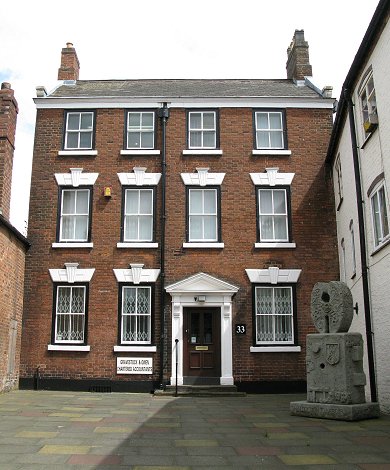
Number 33 Market Place. The
building on the right was the old malthouse. |
|
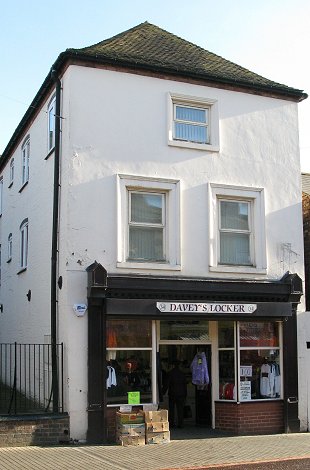
John Clemson's malthouse, now a shop
called
Davey's Locker. |
|
The Hartill
Family
One of Willenhall’s prominent families, the Hartills, became successful businessmen, tradesmen,
manufacturers, and property owners. The family moved to
Willenhall from the Kinver area and claimed to be descended from
the Lords of the Manor of Hartill in Cheshire.
Members of the family had arrived in
Willenhall by the early 17th century. Thomas Hartyll, born
around 1610, had 3 children baptised here in the 1630s and
1640s. His son George married Isobel Cross at Wolverhampton in
1662. During the 17th and 18th centuries, members of the family
were locksmiths and landowners.
Isaac Hartill, a genial, friendly, and
popular man, ran the Neptune Inn in Walsall Street for many
years. The inn stood opposite St. Giles' Church. On his death in
1820, at the age of 90, he was succeeded
by his son Isaac Hartill junior, whose son Jeremiah, was born in
1804-05 at the Neptune. Jeremiah became a
prosperous doctor in the town, establishing his medical practice
in 1826. He was very involved at St. Giles' Church and became a
church warden in 1838, continuing in the post until 1841.
1832 had been a wake-up call for Willenhall
because of the terrible cholera epidemic in neighbouring
Bilston, where 745 people died, almost one in twenty of the
population. Willenhall had the same unsanitary living
conditions, and dreadful slum housing as Bilston, but got off
very lightly with 42 cases, and 8 deaths. The Public Health
Committee decided that something had to be done to improve
conditions in the town, to safeguard it from another epidemic.
They decided to appoint an assistant overseer at a salary of £20
per year, to ensure that there was better administration
of the Poor Laws. The post was given to a member of the Hartill
family, Mr. Randle Hartill, who held the post for a short while,
as did his successor. The post then remained vacant. |
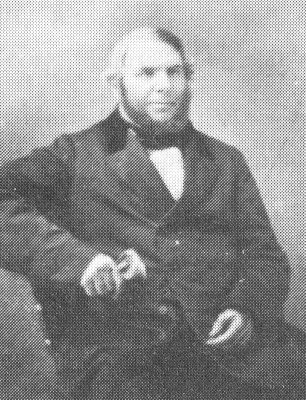
Jeremiah
Hartill. From Hackwood's Annals of
Willenhall. |
The efforts of the
committee were in vain, because too little was
done, too slowly. When the terrible cholera
epidemic of 1849 spread rapidly through the
town, three doctors worked tirelessly,
disregarding their own safety, to save as many
lives as possible. One of the three doctors was
Jeremiah Hartill, the other two were Mr. J.
Froysell, and Dr. Pardey.
Jeremiah had a new house
built in 1847 on the corner of Walsall Road and
Birmingham Street. At the time he was a
prominent fighter for land reform, because it
was almost impossible to obtain freehold or
leasehold land in the town. A formal public
dinner was held in recognition of his efforts.
During the dinner it was suggested that he
should call his house 'The Manor House' because
of his assistance in overcoming the opposition
of the Lords of the Manor to land reform. As a
result the house became known as 'The Manor
House', a name it still carries today.
Jeremiah was eventually
joined in the medical practice by his two
nephews, William Henry Hartill (born in
1838-39), who joined in 1861. William's brother
John Thomas Hartill (born in 1847-48)
joined the practice in 1869. |
| In 1881 Jeremiah gave £200 to the vicar and
wardens at St. Giles' Church to be invested in
consolidated annuities. The interest was to be
annually distributed on January 1st to 20 poor
people of the town. This became known as the Hartill Charitable Trust. Jeremiah never
married. In the 1881 census he is listed as
living at the Orchard in Wednesfield. By that
time John Thomas Hartill had moved into 'The
Manor House'. Jeremiah died at Wednesfield on
26th February, 1888. |
| The two brothers, William
Henry, and John Thomas, married daughters of
James Tildesley.
William married James's eldest daughter
Louisa Elizabeth, born in 1842-43 and John
married her younger sister Emily, born in
1847-48.
Like his uncle Jeremiah, John was very active
at St. Giles' Church, and for a time was a
church warden. |

John Thomas Hartill's
house, 'The Manor House' in Walsall Road, now a
residential home. |
| Two of his sons entered the
church. Percy Hartill, B.D. became Archdeacon,
and Rector at Stoke on Trent, and his brother
the Rev. Edgar Hartill became Vicar of Penn, and
Rural Dean of Trysull. There were two daughters,
Gertrude, and Ellen. The family shared the house
with John's sister Eliza, and his medical
assistant Henry E. Jones. They also had several
servants. |
|
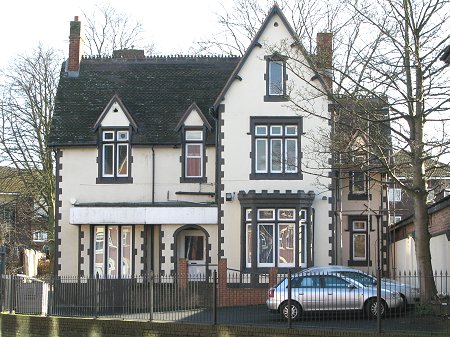
William Henry Hartill's
house, number 2 Walsall Road. |
William and Louisa lived next door to John
and Emily at number 2 Walsall Road. William's
daughter Alice, born in 1868-69 became the first
Staffordshire J.P. to sit on the Willenhall
Bench, and her sister Edith Florence, born in
1869-70 spent much of her time working for the
Bible Reading Union.
Their other children
included 2 sons, Albert and Frederick, and three
daughters, Emily, Ethel, and Winifred.
William
was Willenhall's second Medical Officer for
Health, and a Justice of the Peace for
Staffordshire. He died in 1889. |
|
John continued in the medical practice, and
followed William as Medical Officer for Health
for Willenhall. He became President of the
Staffordshire branch of the British Medical
Association in 1885, and again in 1907. Like his
brother he was a J.P. for Staffordshire. John
continued in practice until his death in 1913.
|
|
Thomas Hincks
Thomas Hinks (1715 to 1777) was a
prosperous maltster. He married Mary Thurstans from
Shareshill, and lived at Dale House in Bilston Street
which was built around 1750, and is now Dale House
Restaurant. His malthouse, which adjoined Dale House,
became Willenhall's first cinema, the Coliseum, which
opened in 1914. The cinema was then modernised, and
became the Dale Cinema, which opened on the 31st
October, 1932, and could seat 1,150 people. It later
became a bingo hall, and is now a Wetherspoon's pub,
appropriately called The Malthouse.
In 1763 Thomas purchased two pieces
of land from the Fowler family, which had originally
belonged to the Levesons. The land consisted of a group
of fields known as 'The Harpers' which now form part of
the Memorial Park. The other land was originally the
site of the Leveson family's home, the Moat House. It
extended from Leveson Street to Wood Street, and from
Stafford Street to Cemetery Road. When Thomas died, the
land was inherited by his son Joseph who married Sarah Molineux, the daughter of a wealthy local ironmaster. On
Joseph's death, his daughter Barbara inherited 'The
Harpers', and his son Samuel inherited the Moat House
land.
|
| Joseph's grandson, Thomas (1775 to
1866) became a trustee of the Chapel of Ease Estate, and was
a chapel warden when the notorious Rev. William Moreton
was Curate of Willenhall.
Around 1812 Moreton was
compelled to make a deed of arrangement with his
creditors, and Thomas was instructed to oversee the
payment of the debt from the revenues of the church
living. |

Dale House, now a restaurant. |
 |
The entrance to J. D. Wetherspoon's pub
in New Road,
appropriately called The Malthouse.
It opened on 21st December, 1999. |
|
During his time as chapel warden,
Thomas became involved in a curious incident at St.
Giles Church. In the 1820s there was great rivalry
between certain people in Darlaston and others in
Willenhall, which sometimes got out of hand, leading to
rioting and fighting in the streets. This was possibly
fuelled by the cockfighting matches between the two
towns which were extremely competitive. The Willenhall
townspeople were justifiably proud of their magnificent
weather cock that stood on top of St. Giles' Church
tower, which to some symbolised the sport.
On occasion, protagonists from
Willenhall would taunt the Darlaston townsfolk by
scattering corn in St. Lawrence's churchyard while
calling their weathercock from its tower. It is believed
that some of the people from Darlaston took their
revenge in an unforeseen way, which soon became apparent
to everyone in Willenhall.
When the people of Willenhall awoke
on the morning of Sunday 22nd July, 1827 they discovered
that the weathercock had been stolen. The general
feeling was that it had been taken by people from
Darlaston in retaliation. Two days later the following
public notice was issued by Thomas Hincks and James
Whitehouse:

From Frederick Hackwood's 'Annals
of Willenhall'.
|
| The notice had no effect. No one
came forward with information, and the weathercock could
not be found. The empty tower dented Willenhall's pride,
and so a new weather vane was
quickly installed.
Some time later the weathercock was
was found by coalminers reopening an old pit which lay
between the two towns. The weather vane was quickly
removed, and the weathercock reinstalled in its former
position, possibly more securely than before.
Frederick Hackwood, in his 'Annals of Willenhall' states that
a copy of the public notice used to
hang in the Neptune Inn as a curiosity. |
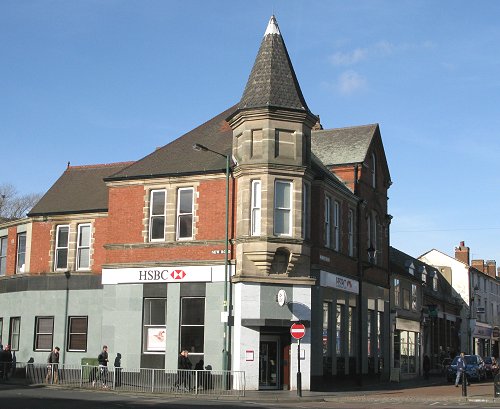
The HSBC building, once the
Metropolitan Bank. |
| |
|
|
Read about
George Benjamin Thorneycroft an important local
benefactor |
 |
| |
|
|

Dale House, and the Dale Cinema
are on the left, and the Metropolitan Bank is on the
right. From an old postcard.
|
| |
|
| Read the Willenhall
entry in Harrison, Harrod & Company's 1861 Directory of
Staffordshire |
 |
| |
|
| The Tildesley Family Members of
the Tildesley family were, and still are, successful
Willenhall businessmen, manufacturers, and professionals
in many walks of life. The first family member known to
have lived in Willenhall was Jeffery Tildesley who moved
to the town from Tong in Shropshire around 1730. In 1731
he married Elizabeth Thomas, daughter of the landlord of
the Bell Inn in Market Place.
|
|
Jeffery purchased the Bull’s Head
Inn in Wolverhampton Street and ran it until his death
on 11th February, 1792, at the age of 86.
He was very involved in the local
church, and in 1760 was appointed as a trustee of the
Chapel of Ease Estate. He had a large family including 3
sons, John, Samuel, and Richard. He is buried in St.
Giles’ Church where there is a memorial to him. In 1842
the Bull’s Head was run by a second Jeffery Tildesley, presumably Jeffery senior’s
grandson. |
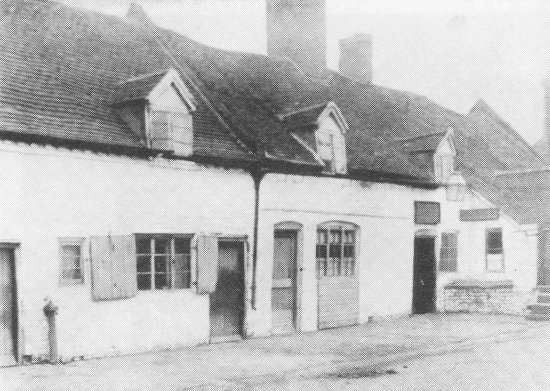
The Bull's Head. From Frederick Hackwood's Annals of
Willenhall. |
|
One of Jeffery’s grandson’s Richard
Tildesley (1798 to 1858), was the first person to open a
brass foundry in Willenhall. He also cast malleable iron
at his factory in Cross Street. Richard’s eldest
daughter Harriet married the well known miller, baker,
and grocer, Joshua Rushbrooke in 1849. The family had at
least one shop in Cross Street because Richard is listed
in Pigot & Company’s Directory of 1842 as a beer seller,
and Violetta Tildesley is listed as a grocer and
provision dealer, both in Cross Street. Violetta was married to Thomas
Tildesley, a prosperous grocer, and like many other
family members, a staunch supporter of the Methodist
cause. Thomas died in 1837.
Pigot & Company’s Directory also
lists an Isaac Tildesley, an ironmonger and beer seller
in Church Street, and another Jeffery Tildesley, a
shopkeeper in Workhouse Lane.
Members of the family opened the
first malleable iron foundry in Willenhall when Matthew
Tildesley (1811 to 1879) jointly founded John Harper &
Company with his cousin John Harper at Albion Works.
Another family member, Jesse
Tildesley, born in 1836, founded Jesse Tildesley
Limited, a firm of structural engineers. He is described
in the 1881 census as an iron bridge builder employing
32 men and 9 boys. He lived at 10 New Road with his
parents, Josiah born in 1810-11, his mother Ann, and two
younger sisters, Eliza and Susanna. They also had two
live-in servants. Jesse was a member of Willenhall Local
Board, and the first chairman of
Willenhall Urban District Council in 1894, and continued
in the post until 1896. He also became a keen Methodist
and lay preacher. Along with his cousin James Carpenter Tildesley, he was one of main contributors to the
Willenhall Magazine, which was published monthly by J. Loxton,
in the Market Place, during 1862 and 1863. Jesse died in
1919.
|
 |
|
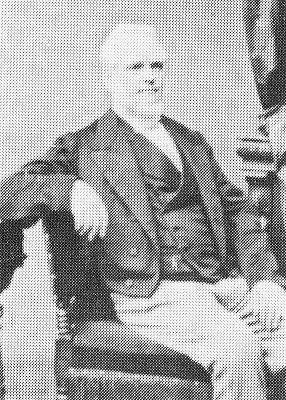 |
|
James Tildesley (left), Josiah Tildesley
(right). From Frederick Hackwood's Annals of
Willenhall. |
|
| The Tildesley family ran one of
most successful lock making companies in Willenhall;
Carpenter and Tildesley. It all began in 1830 when John
Young and James Carpenter jointly patented an improved
design of latch bolt and lock. They decided to divide
the patent into rim lock use and mortice lock use, which
gave John Young the right to make mortice locks, and
James Carpenter the right to produce rim locks.
Carpenter’s lock became known as "Carpenters lift up
lock" and was a great success. He built a large factory in New
Road, known as Summerford Works and produced large
numbers of locks. His daughter Harriet married James
Tildesley, a local lockmaker. When James Carpenter died
in 1844, John Carpenter and James Tildesley inherited
the business, Carpenter and Company, which in 1851
became Carpenter and Tildesley. James dissolved his
partnership with John Carpenter and became the sole
owner of the company. James greatly developed the
business, which now exported large numbers of locks to
Australia. He also developed a double-handed lock which
could be used on a right or left hand door. James
Tildesley was chairman at the first meeting of the
Willenhall Local Board of Health on the 18th September,
1854 which had been set up under the terms of the 1848
Public Health Act. Two of his daughters married members
of the Hartill family. His eldest daughter Louisa
Elizabeth, born in 1842-43 married John Hartill, and her
younger sister Emily, born in 1847-48 married John's
brother William. James died in 1876 and the business was
inherited by his eldest sons, James Carpenter Tildesley,
and Clement Tildesley. |
|
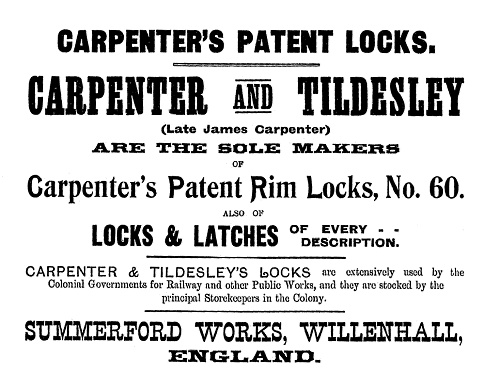
An advert from the
1897 edition of the |
They both became County Magistrates
and lived at Summerford House with their mother,
brothers Roland, and Ernest, and sister Florence. They
also had two live-in servants. Clement became the second
chairman of Willenhall Urban District Council, his
predecessor being his cousin Jesse.
His younger brother
Roland, a solicitor, was Clerk to the Council, a post he
occupied from 1894 until 1920. |
|
James Carpenter Tildesley was
clearly a busy man. As well as being a J.P. for
Staffordshire, he was Chairman of Willenhall Petty
Sessional Division, President of Wolverhampton Chamber
of Commerce (1885), Chairman of Willenhall Local Board,
Chairman of Willenhall Liberal Association, and
Sub-Editor of Birmingham Morning News. It was mainly due
to his efforts that the Willenhall Literary Institute
was founded, and the Free Library established. In
recognition of this work, he was presented with an
inscription at a public presentation on the 4th January,
1869.
He was a keen author, writing works
on Methodism, local history, and with his cousin Jesse
contributed to the monthly Willenhall Magazine in 1862 and 1863.
His work on Methodism was entitled ‘Sketches of Early
Methodism’. James retired to Penkridge, and wrote a
history of Penkridge which was published by Steen &
Company of Wolverhampton in 1886. James Carpenter Tildesley died in 1907 at
the age of 67.
Thomas Tildesley had a timber yard
in Railway Lane, which caught fire on 6th July, 1899. It
was one of the town's largest fires, and caused around
£2,000 worth of damage.
One of the family’s other
companies, W. H. Tildesley Limited, founded by William
Horace Tildesley in 1874 is still going strong today.
Early products included curry combs, sweat scrapers,
tail combs for horses, vermin traps, and horse shoe
blanks. The company began to concentrate on drop
forgings and has produced all kinds of forgings for many
applications, both at home and abroad, including vehicle
parts, architectural ironwork, and components for the
admiralty. The factory, called Clifford Works is in Bow
Street, and still family owned and run today. William
Horace Tildesley was succeeded by his son, Horace
William Tildesley, who in turn was succeeded by his son
David. David in turn was followed by his eldest son
Richard, who died prematurely. Today the Managing
Director is John TildesleyA family
member who is well known as a local local historian is
Norman W. Tildesley, born in 1900-01. He was elected as
a councillor for Willenhall Urban District Council in
1934, and continued as such until 1966 when Willenhall
became part of Walsall. He was then elected to Walsall
Metropolitan Borough Council to represent Willenhall. In
1946-47 he was chairman of Willenhall Urban District
Council. Norman also regularly attended St. Giles'
Church and became a lay reader. He is best remembered
for his book "A History of Willenhall" published in 1951
in conjunction with Willenhall Council to commemorate
the Festival of Britain. Norman died on 19th March, 1993
at the age of 92.
|
| One final family business which
must be mentioned is Reginald Tildesley's garage and car
showroom on the corner of New Road. Reginald Tildesley
was Willenhall's main Ford dealer for many years, and
also treasurer of the Willenhall Operatic Society.
The
garage closed in 1982. |

Reginald Tildesley's garage, around 1927. Courtesy of the late Jim
Boulton.
|
|
Doctor Richard Wilkes, M.D.
No description of local
worthies would be complete without a mention of a
well respected local figure, Doctor Richard Wilkes,
who will always be associated with the street that
bears his name, Doctors Piece. The family are also
remembered thanks to Wilkes Street.
The first local record of the
family goes back to 1331 when John Wylkys of
Darlaston witnessed a deed of Roger, Lord of
Darlaston. The family were granted land at Bentley,
and by the early 15th century had moved to
Willenhall. In 1413 a Richard Wylkys of Willenhall
witnessed a Bentley deed.
The family built a large house
in Willenhall which was badly damaged, or completely
destroyed in 1659 during the town’s disastrous fire.
The house was rebuilt by Richard’s father and became
known as The Old Hall. |
|
Richard Wilkes was born on the
16th March, 1690. His parents were Richard and
Lucretia Wilkes. Lucretia came from Wood Eaton, her
maiden name was Astley.
Richard was educated at
Trentham, followed in 1910 by St. John’s College,
Cambridge where he studied theology and obtained a
B.A. in January 1715, followed by an M.A. He became
proficient in algebra after beginning a course of
maths lectures in April 1711 that were given by Mr.
Saunderson. From 1715 he taught maths at Cambridge,
and in 1718 became a fellow of the college.
Richard took deacon’s orders
and was ordained as deacon to the parish of Stowe by
Chartley in Staffordshire, between Stafford and
Uttoxeter. He preached once at St. Peter’s Church in
Wolverhampton, but became disillusioned with the
established church, and never took priest’s orders.
Around 1720 he returned to
Willenhall where he began to practice medicine.
Although he was not a qualified doctor, he adopted
the title of M.D. although he was not entitled to do
so. He played a leading role in the life of the
town, and took an interest in the health and well
being of his poorer neighbours, helping them
whenever possible, and dispensing medicine to them. |
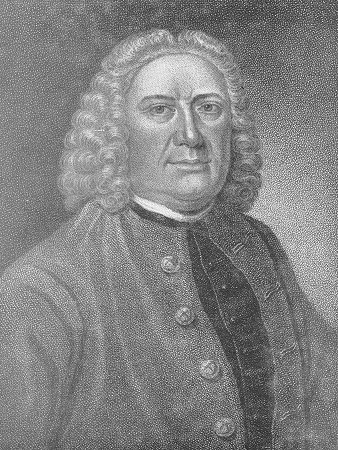
Richard Wilkes, M.D. |
|
Richard married his first wife,
Rachel Manlove, from Abbots Bromley, on the 24th
June, 1725. At the same time he acquired a large
fortune, she was extremely wealthy.
In the 1730s he wrote a
treatise on dropsy in cattle, which was causing
problems in the midlands at the time. Richard was a
prodigious reader, and collected historical
manuscripts. He became extremely knowledgeable about
the history of Staffordshire, and made copious notes
on the subject.
By the time of his father’s
death in 1741 he had become extremely involved in
church life and was a trustee of the Chapel of Ease
Estate. When the chapel was demolished in 1748 to
make way for St. Giles' Church, he played a
prominent role in the demolition of the chapel, and
the rebuilding of the new church, as can be seen
from the following entry in his diary:
May 6th, 1748. This day I
set out the foundations of a new church in this
town; for the old one being half-timber, the sills,
pillars, etc. were so decayed that the inhabitants,
when they met together, were in great danger of
being killed. It appeared to me that the old church
must have been rebuilt, at least the middle aisle of
it; and that the first fabric was greatly
ornamented, and must have been the gift of some rich
man, or a number of such, the village then being but
thin of inhabitants; and, before the iron
manufacture was begun here, they could not have been
able to erect such a fabric; but no date or hint
relating to it was to be found, nor anything about
it come to us by tradition.
Richard became a church warden
at the new church. In 1741 he became a joint
trustee of Willenhall’s workhouse, with John Wilkes,
a surgeon. Richard also owned a waterworks which
supplied water to parts of Wolverhampton. It stood
on what became the site of the Chillington Iron
Works, and later the Chillington Tool Company. He
stated in his diary that the first steam engine to
raise any quantity of water was erected there.
|
|

The Old Hall. From an old
postcard. |
|
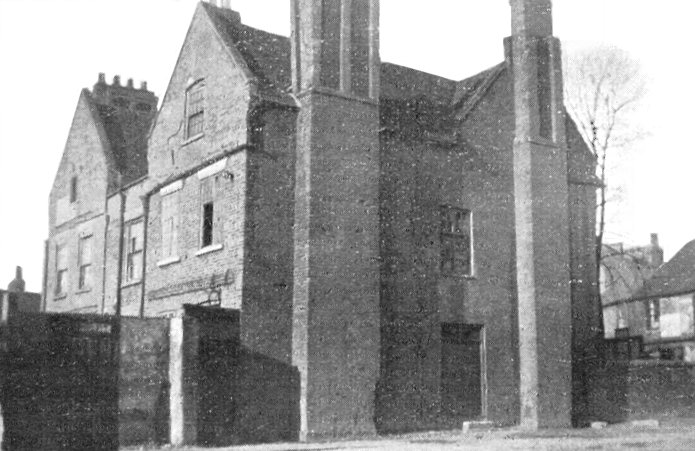
A later view of the Old
Hall. |
|
His first wife Rachel, died in
1756. Shortly afterwards Richard married his second
wife, Frances Bendish, widow of Higham Bendish, and
daughter of Sir John Wrottesley. Sadly the marriage
only lasted for 4 years, because Richard died on
20th March, 1760 at the age of 70, after a
recurrence of gout in his stomach. He was buried
beneath his pew in St. Giles’ Church. After his
death, Frances left Willenhall for good, to live
with her sister in London.
Richard never had children, his
closest family relatives other than his wife were
members of the Unett family, because his aunt Ann
married George Unett of Wolverhampton. In 1800 a
monument to Richard was erected near the family’s
pew in St. Giles’ Church by his heirs, Captain
Richard Wilkes Unett, and Mr. John Wilkes Unett. It
was inscribed as follows:
|
Near this place
Lie the remains
of
Richard Wilkes, M.D.
Formerly
fellow of St.
John’s College
Cambridge; the
last of an
ancient and
respectable
family resident
at
this place 300
years and
upwards. He
married first,
Rachel, eldest
daughter of
Rowland Manlove,
of Lees
Hill, in this
county, esq.;
secondly,
Frances,
daughter of
Sir John, and
sister |
Of the late
Sir Richard Wrottesley, of
Wrottesley, Bart.
And widow of Higham Bendish,
Eaq.
He died March 6, 1760,
aged 70 years.
|
|
Richard’s house and estate were
inherited by his wife. On her death they were to be
passed-on to the Rev. Thomas Unett. Frances survived
for another 40 years, but Thomas Unett died in 1785.
She decided to terminate her interest in the estate
so that other members of the Unett family might
benefit. In July 1791 she conveyed the estate to the
trustees of the Rev. Thomas Unett; Thomas Reynolds,
a Willenhall maltster, and John Ward from Stafford,
a surgeon. The house, outbuildings, and garden had
been sold two years earlier by auction on 10th
September, 1789 at the Swan Inn in Wolverhampton.
The remainder of the estate consisting of
approximately 455 acres of land, houses, and woods
at Smethwick was sold by auction at the Bell Inn on
the 4th August, 1791.
At the auction in September
1789, the Old Hall was acquired by John Beebee, a
gentleman. In 1813 it was put up for sale, but no
buyer could be found. It was re-advertised in 1823,
and finally sold in 1826 to John Read. Mr. Read
later sold the building to Charles Neve of
Wolverhampton, who in 1871 was renting the building
to David Turner, a master butcher, and John Wood, a
padlock maker. Within a few years the building was
sold to George Grimley, a key stamper, who lived
there with his family and two servants. He built a
factory in the grounds which he called Hall Works,
and used part of the hall as a warehouse. In 1918 or
1919 the property was sold to David Waine of John
Waine and Sons, lock manufacturers.
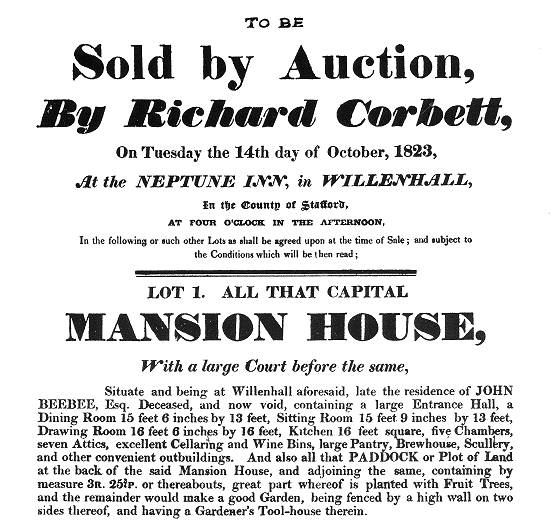
Advertisement for the sale of
the Old Hall in 1823.
In 1923 the house and grounds
were sold to Willenhall Urban District Council for
£3,000. The estate was advertised as the Old Hall,
with an engine house, stack works, shops,
warehouse, stabling, coach house, machine house and
other buildings. The house was initially let to Dr.
Arnim Fuoss, a physician and surgeon who occupied
the premises until around 1932. The council
initially considered converting the building into a
combined Town Hall and fire station, but the idea
was abandoned, and by 1934 the Old Hall had
disappeared to make way for the purpose built town
hall which still stands today.
Richard Wilkes' copious
writings about the history of Staffordshire, and the
surviving manuscripts from his collection, form a
lasting legacy, which is, and will continue to be
appreciated by historians for years to come. One
person who greatly benefited from Richard’s work was
the Rev. Stebbing Shaw, who extensively relied on it
for his ‘History of Staffordshire’. Whilst looking
through Richard’s papers, Shaw found the following
epitaph which Richard wrote during a severe illness,
some years before his death:
| |
Here,
reader, stand awhile, and
know
Whose carcase ‘tis that rots
below.
A Man’s, who walk’d by
Reason’s rule,
Yet sometimes err’d and
play’d the fool;
A Man’s sincere in all his
ways,
And full of the Creator’s
praise;
Who laugh’d at Priestcraft,
pride, and strife,
And all the little tricks of
life.
He lov’d his king, his
country more,
And dreadful party-rage
forebore;
He told nobility the truth,
And wink’d at hasty slips of
youth.
The honest poor man’s steady
friend,
The villain’s scourge in
hopes to mend.
His father, mother,
children, wife,
His riches, honours, length
of life,
Concern not thee. Observe
what’s here.
He rests in hope, and not in
fear. |
|
|
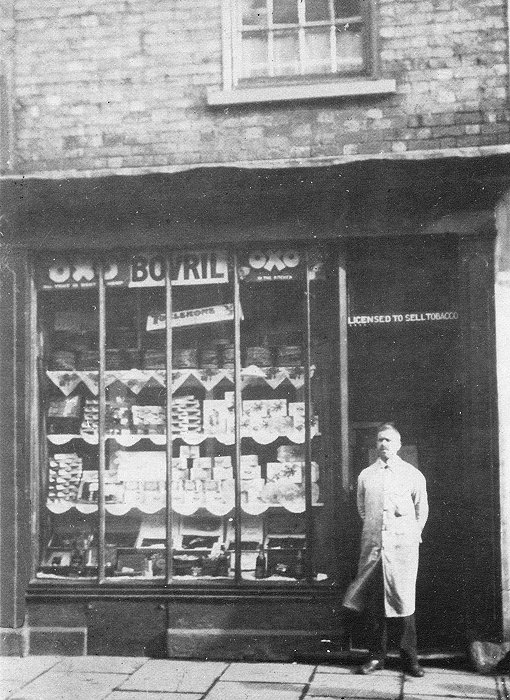
Fontana's confectionary shop in
Stafford Street. Mr. Fontana, who is standing in the
doorway, was born in Italy and sold wonderful ice cream.
From an old postcard. |
 |
|
 |
|
 |
Return to
The
Industrial Town |
|
Return to
the contents |
|
Proceed to
Pubs |
|